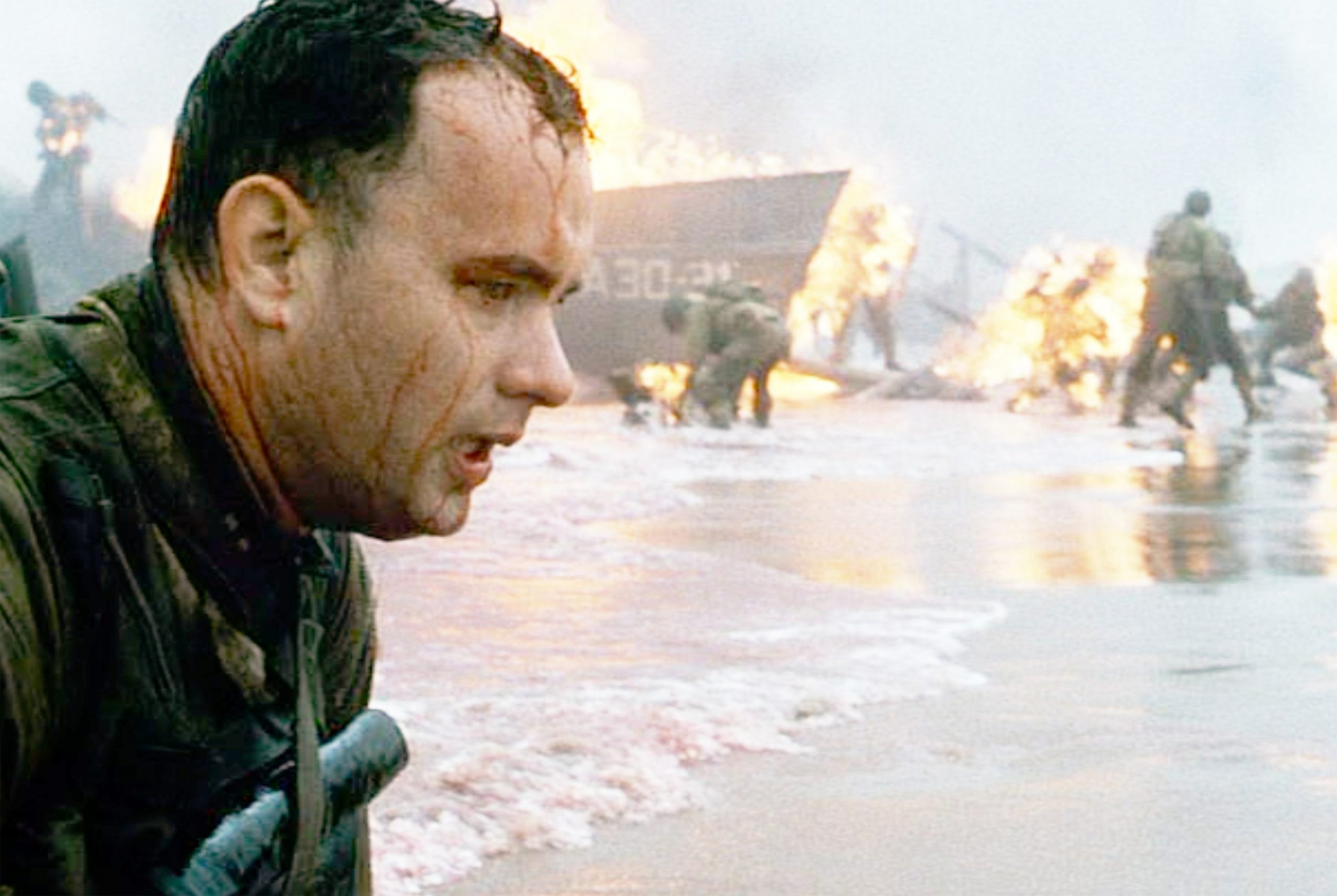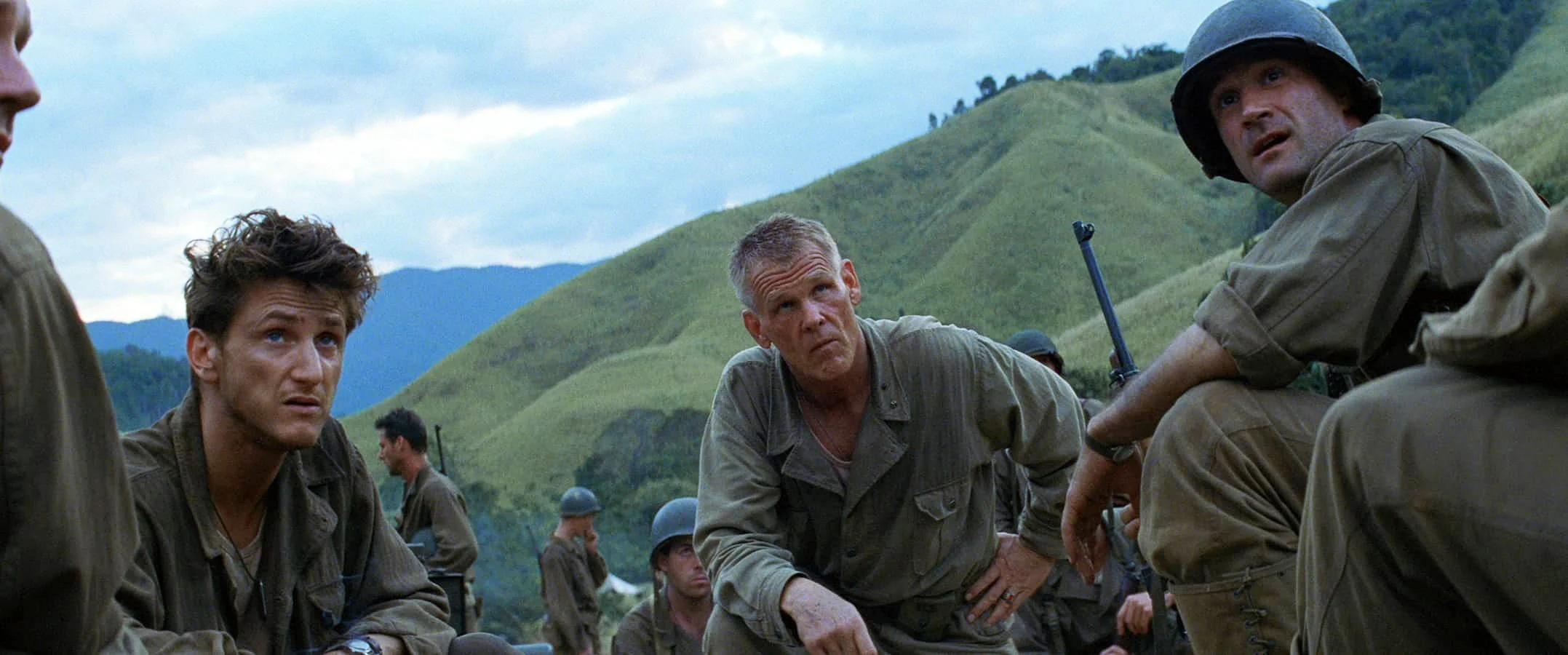Hell on Earth: War in Cinema – SAVING PRIVATE RYAN and THE THIN RED LINE 25 Years Later
by Billy Russell, Staff Writer
In 1998, I had watched Saving Private Ryan at the tender age of 12 and it changed how I viewed war movies forever. Even though Steven Spielberg at that point had already successfully broken away from his “fun guy” movie director persona with Schindler’s List (and before that Empire of the Sun and The Color Purple), I still knew him as the Indiana Jones guy. When I thought of Spielberg, I thought of fun car chases and elaborate special effects. Dinosaurs and magic. A grown-up kid, basically.
Before seeing the movie, all anyone had talked about was how utterly realistic the movie was, that Spielberg did right by his portrayal of war, and that the first 18 minutes of the movie or so were something else entirely. Even hearing all of that, knowing what I was going into, couldn’t prepare me for what I was about to see.
Saving Private Ryan begins with the first wave of the D-Day landing in Normandy, France. Within seconds of the landing crafts hitting the beach, German machine gun fire rains down on the soldiers and they’re torn to pieces. Bullets rip through flesh. Blood splatters the camera. Explosions rip limbs and soldiers lie on the beach and cry for their mothers in their final, dying moments. Jesus fucking Christ. It was like a nightmare caught on film.
Up until then, I mostly viewed war movies (with obvious exceptions like Apocalypse Now) as corny, jingoistic affairs, with heroism bleeding in red, white, and blue. But Saving Private Ryan showed me something I was totally unfamiliar with. It showed the horrifying consequences of war with an unflinching eye. And the plot itself was a metaphor for the ridiculousness of war—sending an entire platoon of Army Rangers to die, to rescue one man, for a PR stunt, to raise morale over the war effort back home. Saving Private Ryan admires the heroism of individual men in war, but views war itself with disdain.
Months later, in late 1998, Terrence Malick released his first film in decades: The Thin Red Line, about the Guadalcanal campaign in the Pacific Theater of Operations—worlds apart from the France of Saving Private Ryan.
Prior to 1998, the war film industry was more or less dead. There hadn’t been a decent war movie made in just about a decade. Movie audiences had moved away from them, and war was relegated to the background. Schindler’s List was about the war, but focused on the horrors of the Holocaust. Now, two big budget films were being released, one by one of the most famous filmmakers of all time, and the other by an esteemed, brilliant director who enjoyed a two-decade hiatus. The two films, with completely different philosophies, wound up having much more in common than anyone would have ever imagined.
When I was a kid and I saw The Thin Red Line, I thought it was okay. It was the first Terrence Malick movie I’d ever seen, so I wasn’t prepared for a three-hour long movie that was about 10% story, 40% scenery shots and 50% non sequitur voiceover flashback sequence. At the time, I thought it was too artsy-fartsy for its own good.
Now, as a grown adult who’s seen Days of Heaven, Badlands and many of his other essential flicks, I’ve got a good read on the guy and understand his work a lot better. I have rewatched The Thin Red Line and I think it’s terrific filmmaking. As a kid, I thought Malick and Spielberg were on opposite ends of the filmmaking spectrum, but in truth, and especially with films like this, it’s more like a Venn diagram that overlaps in the middle. In their other works, they’ve both gotten some of the best usage out of Douglas Trumbull’s brilliant special effects.
The Thin Red Line and Saving Private Ryan both place us, the viewer, into the action of the films through differing techniques. Whereas Janusz Kaminski’s cinematography on Saving Private Ryan is filmed as a quasi-documentary, handheld like an old newsreel, John Toll’s camera work in The Thin Red Line simulates perspective shots on soldiers laying in the grass, or viewing the through the leaves of a tree as they die.
Both films have a sort of casualness to death. A soldier will crawl toward an enemy and then with a crack of a rifle and a dull smacking of bullet against flesh, they’ll slump over dead. Another casualty in a war that had millions and millions of lives lost.
Saving Private Ryan takes us on a tour of the France campaign, beginning with D-Day on Omaha Beach and then taking us inland through several bombed-out villages. The Thin Red Line underscores the absurdity of its campaign by focusing on a specific hill that needs to be captured. Success is measured in inches and in feet. A certain ridge of the hill will have the machine gun nests taken out, then ten more feet until a crest, a dozen more people slaughtered, and then eventual success. Hundreds of people are slaughtered and fed to the machine before this stupid hill that doesn’t even have a name is captured.
The Thin Red Line does a great job at showing shit rolling downhill. An out-of-touch general commands an overzealous colonel to order an emotionally-broken captain to have a segreant take a group of men and lead them into inevitable death. We see the entirety of the chain of command, from the comfort and safety of the ship, to the blood and the guts in the grass.
Saving Private Ryan and The Thin Red Line both find juxtapositions in the natural world existing within a war-torn battlefield. Clouds will pass by the sun and a shadow will move across a hill, grass swaying gently in the breeze—moments before artillery begins shelling and raining down destruction. Or rain will drip into a puddle with a plop, then a bang, then a boom, and we’re brought back to the hideous reality of gunfire. It’s as if to point out how strange it is that we animals need to destroy this world, or that the world of war is so all-encompassing, we forget that it’s even the same planet.



